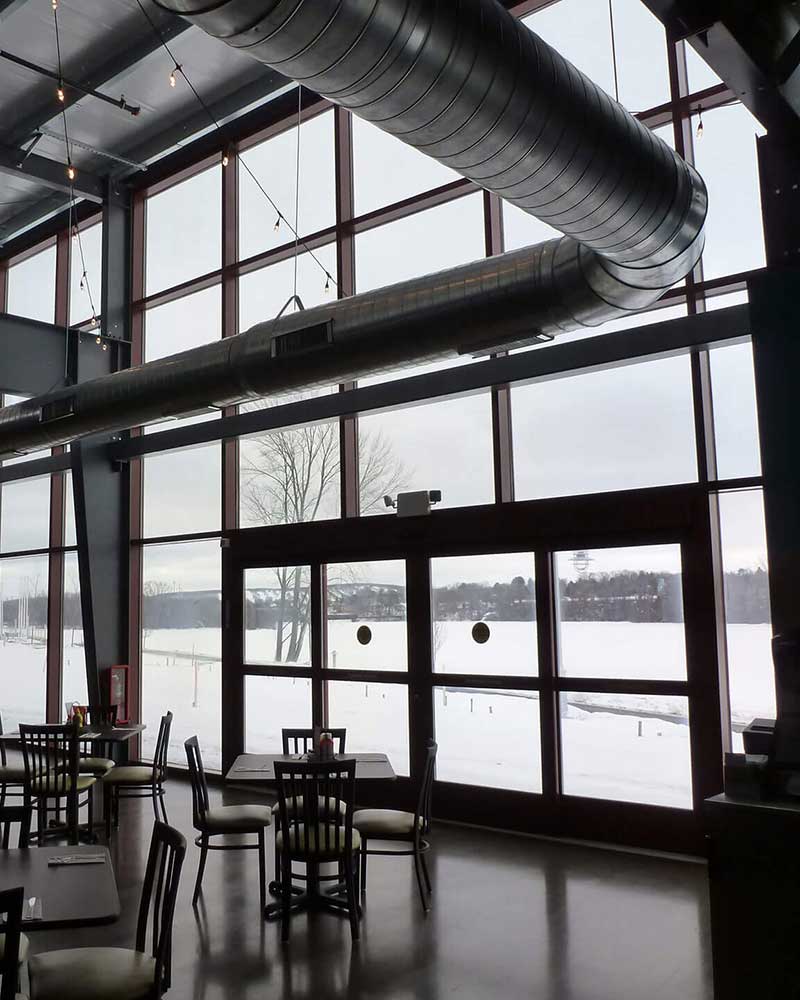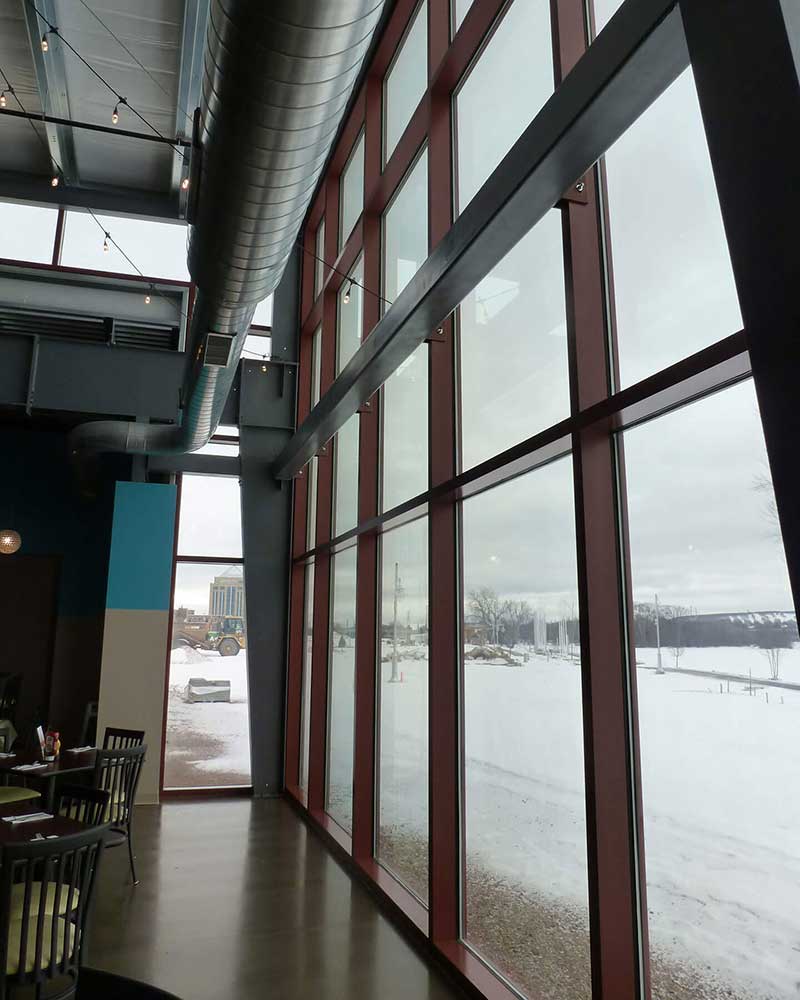Case Study
WOW
The WOW Family Entertainment Center opened at the end of 2016 bringing fun and games to the Wausau area. After a long search, the team behind the business found its location and knew what it needed from the glass and glazing.
Client: WOW (Wausau on the Water)
Location:1 300 N River Dr, Wausau, WI 54403
Study Date: August 16, 2017
Curtain Wall: FrēMarq Innovations
Low E Glass: Cardinal
Spacer: Quanex
Fabricator: Custom Glass Products
Kynar applied by: Linetec
Glazing Contractor: Rib Mountain Glass
Architect/Design-Build: United Structures Inc.
Overview
What happens when you mix a great idea for a family-oriented business with building products that perform at the top of the class? It makes for a winning atmosphere all the way around. In Wausau, Wisconsin such a building now exists featuring a thriving establishment and a glazing combination that truly is high performance.
Glass:
1” OA Insulating glass units featuring:
¼” bronze tinted float
½” Quanex super seal spacer with argon gas fill
¼” clear with Cardinal LoE-366 on #3
Framing
Zero Net PW2500 Pressure Wall (Curtain Wall) with Fiberglass Thermal Barrier.
Finish:
Cool Colonial Red 70% Kynar paint.
U Factor
-Transfer Coefficient-
0.286
SHGC
-Solar Heat Gain Coefficient-
0.238
VLT
-Visible Light Transmittance-
0.337
CRF
-Condensation Resistance-
82
The Study
“We wanted something on the water and with a great view. This is where the curtain walls came into play, for the large view of the Wisconsin River from our dining and bar areas,” said Michael Vanderloop, Operations Manager, WOW Family Entertainment Center.
The climate in Wisconsin can be challenging to say the least. Winter can be bitterly cold, testing the glazing to its limits. High-performance glass has become a mainstream option but the framing it goes into has lagged behind. One such company is working to change that landscape – FrēMarq Innovations. FrēMarq has focused its efforts on truly high-performing architectural framing systems and offering the design teams and building owners the ability to reject any compromises to go to the old standard products.
In comparison, a more traditional framing system would show dramatically less performance overall, especially on the U Factor and condensation resistance.
The other keys with using this assembly are:
- Interior frame temperatures contribute to occupant comfort, increasing useable floor space and building envelope energy efficiency.
- Patented Fiberglass thermal barrier stops the transfer of heat and cold.
- In high humidity environments, warm interior frame temperatures play a critical role in alleviating condensation on framing.
These advantages are something that the folks at WOW have easily recognized.
“With all of the glass one would think of the cold climate here in Wausau, but we have had a great experience with the glass and curtain wall system. It is not cold by the windows and we have that beautiful view we all wanted,” Vanderloop added.
The team from FrēMarq knew first hand what to do when the situation presented itself.
“The glazing assembly provided what the building owner wanted and the tested performance bears it out. The analysis via NFRC software shows a very low assembly U-factor and very warm interior frame temperatures. These results allowed the designer and owner to see the performance overall,” said Todd Frederick, President, FrēMarq Innovations. “We know good glass performance will be weakened with a poor performing frame. It is crucial that the glass, spacer, AND frame are specified properly for the assembly to achieve peak performance”
In addition to this being a very high performing system, everything from an installation standpoint ran very smoothly.
“System installation was simple and very straight forward. The high level of product and project engineering coupled with the expert fabrication we received made the installation easier and better than some products we have installed in the past. Gasket glazing system (molded corner gaskets) and all other internal components fit and installed perfectly,” said Maurice Wolfe of Rib Mountain Glass, the glazing contractor on this project.
Performance on buildings like this used to be an afterthought but that is changing with a more serious focus on the importance of performance and guidance from regulatory bodies.
“The requirement for more energy efficient fenestration materials is becoming more of a code/standards issue, recognizing the long-term value due to energy dollar savings and environmental costs. Building owners are looking to obtain their best-operating values for the construction funds spent so the cost upgrade of the enhanced energy may pay off for years to come,” Wolfe added.
More About The Framing
Aluminum Framing
- Modeled after system designs that have been successfully used for years in the glazing industry
- Back member and face cap completely cover the fiberglass thermal break
- Framing system looks the same from exterior or interior as traditional systems
- Creates the structural component of the system
- Cover caps are easily and affordably customizable
- Different depth back members accommodate design pressure and span requirements
Thermal Barrier
- 290 times less conductive than aluminum
- High strength to weight ratio
- Low coefficient of thermal expansion is similar to glass
- Compatible with silicone sealants
- Mechanically fastened into the framing
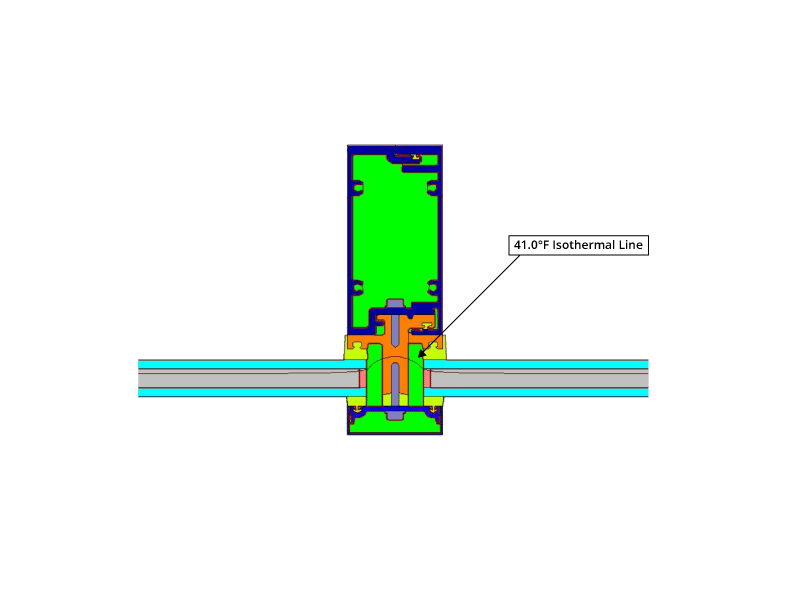
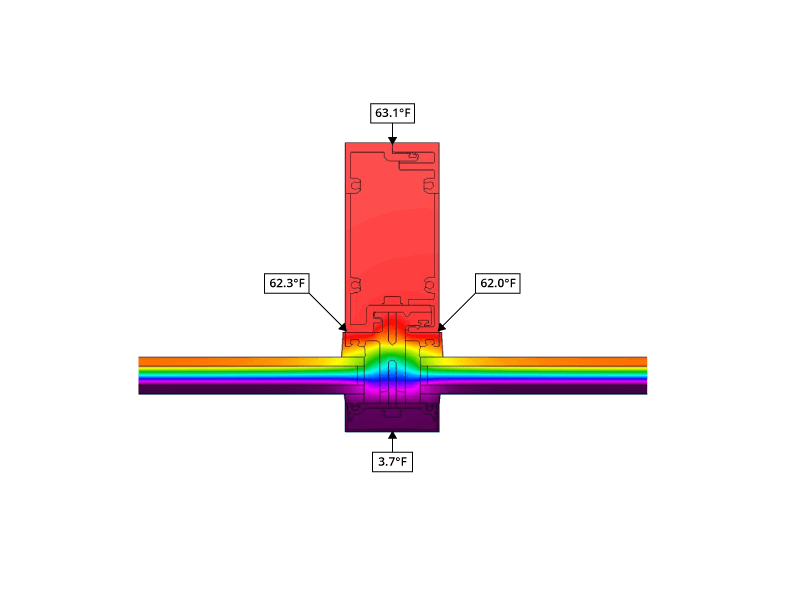
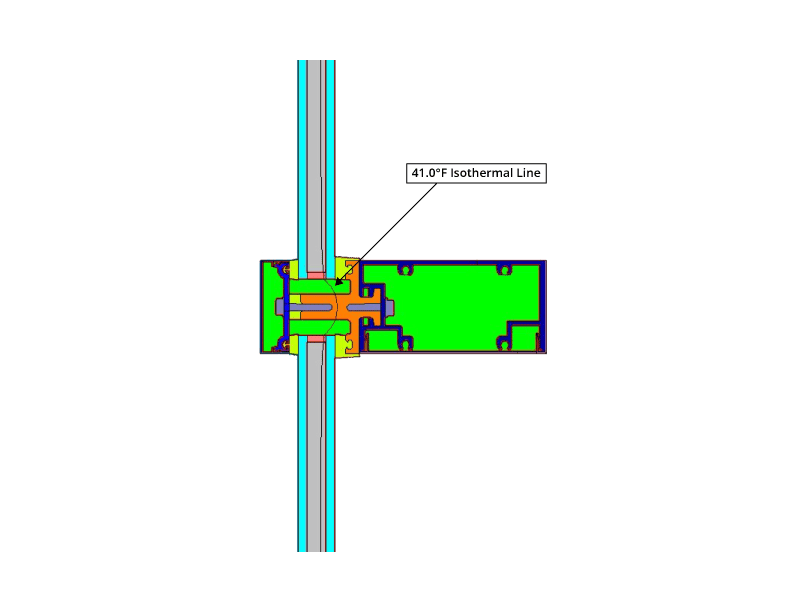
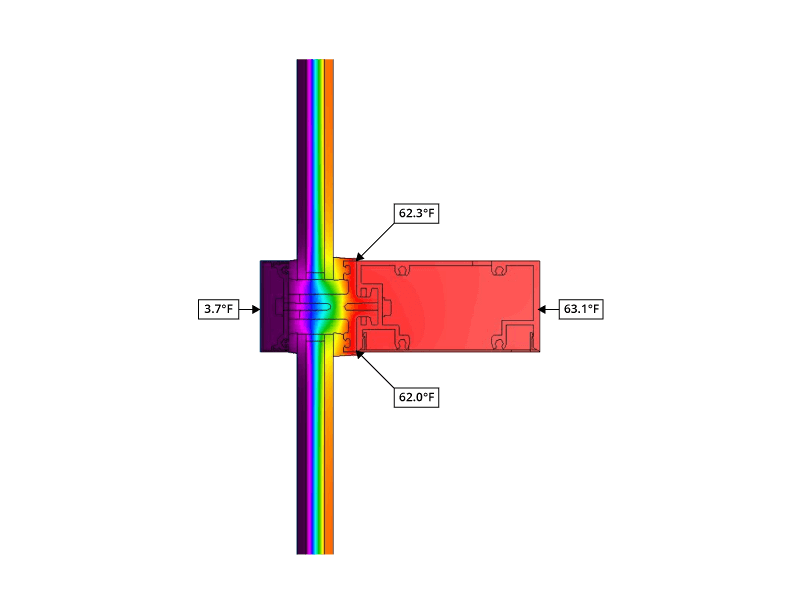

Notes
Pictures and thermal images are available upon request. Testing simulations- THERM 7.4 and WINDOW 7.4
Standards-
NFRC 100-2014: Procedure for Determining Fenestration Product U-Factors.
NFRC 200-2014: Procedure for Determining Fenestration Product Solar Heat Gain Coefficient and Visible Transmittance at Normal Incidence.
NFRC 500-2014: Procedure for Determining Fenestration Product Condensation Resistance Values.
Standard NFRC environmental conditions were used to analyze the system, which are -0.4°F exterior ambient temperature with a 12.3 mph wind acting perpendicular to the wall. An exterior film coefficient of 4.579 BTU/hr*ft2*°F was used to represent the exterior wind. Interior conditions were modeled as 69.8°F ambient temperature with natural convection only.
The center of glass U-factor for the insulating glass system calculated as 0.234 BTU/hr*ft2 *°F.
U-factor calculations were performed on standard NFRC rating size consisting of two lite wide specimen with an overall size of 79” X 79”.
